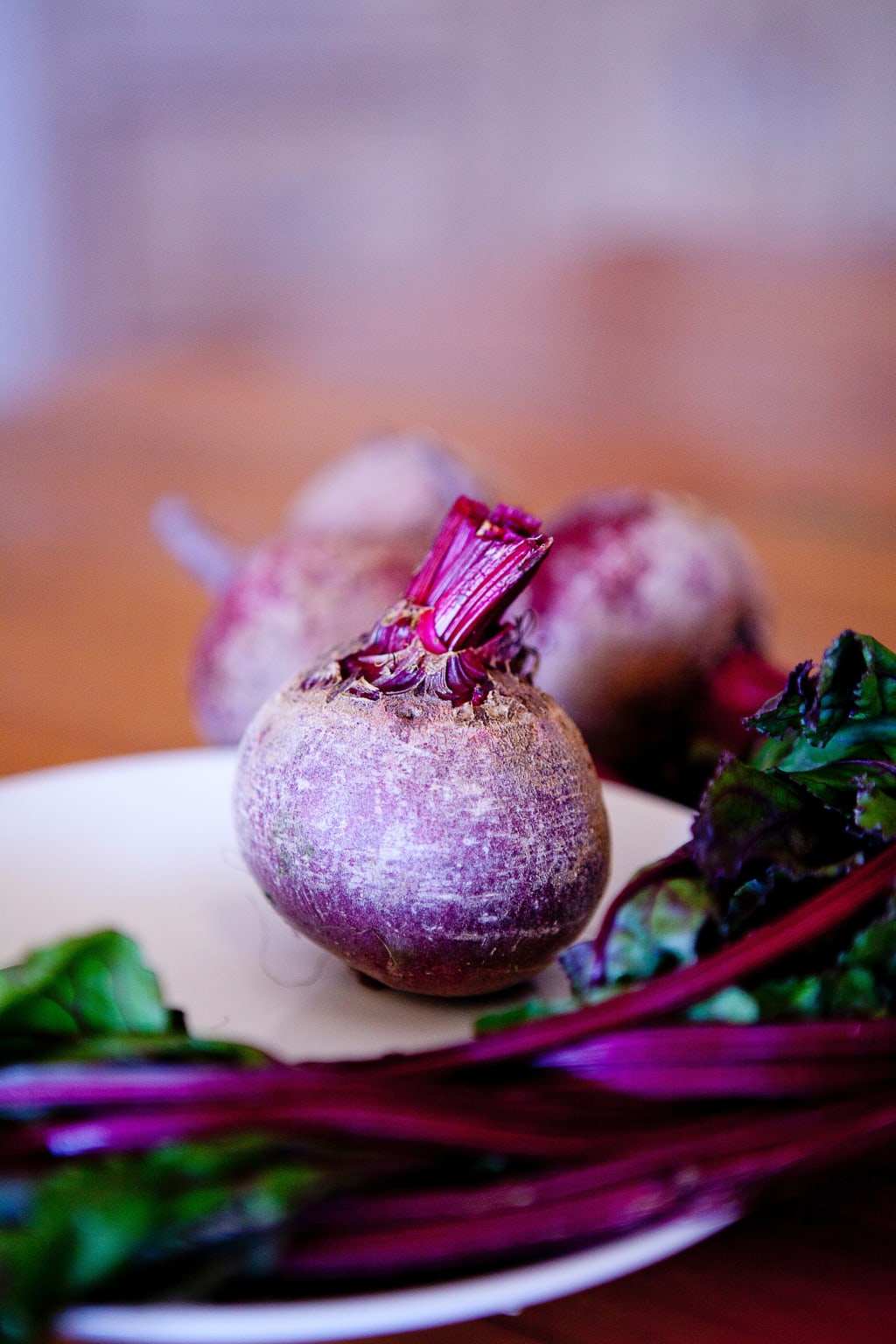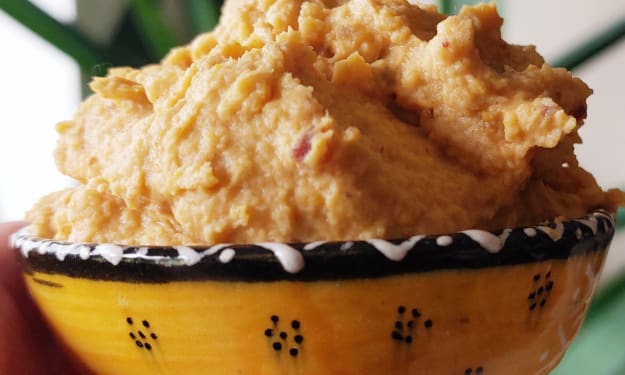In Defense of the Beet
The Little Root Vegetable That Could

Once upon a time, I was a cook. For the most part, I just use those skills to slap together the occasional cheese board or impress my girlfriend's parents with a nouveau cuisine something-or-other. I'm no chef, but the inspiration for these ideas did come from one—particularly my love for a damn good beet.
Beets are criminally underrated; they didn't do anything to deserve it, but the old boiled-dinner-classic beet has done the vegetable dirty. The finger-staining purple pot-water turns off a fair share of my friends and even more after the fright that somehow their kidneys have exploded when they drain the main vein the next morning. There is more to the beet than a pot full of unseasoned boiling water, and damn it, the people have a right to know!
I have in my time baked, fermented, pickled, sautéed, pureed, shredded, hated, and loved beets, sometimes all on the same day. I've got some ideas, tried and tested in a few award-winning kitchens, and need to share them to save the honor of my favorite root vegetable. First off, a simple beet bake:
Here's the deal, I know beets take forever to bake, but every second that they're in the oven concentrates and adds flavor to a perfectly simple ingredient. Beets, in the absolute best way possible, taste like dirt. They're earthy, musty, saccharine, and like us all, can use a little love. Sprucing them up starts with cleaning them. Whatever you do, DO NOT remove the skins before you cook them: if you do, you're going to have vegetarian leather.
Cut the leaf stems about an inch from the base and hang onto the greens for later (they're delicious in and of themselves, use the whole plant!). Wash off as much of the dirt as you can, but don't worry about it too much, you'll remove the skins after cooking. Put the beets into a large bowl along with olive oil, fennel seed, salt and pepper, and toss until covered evenly. Place the beets in a jelly roll pan and space them as evenly as possible. Take a half cup of water and a quarter cup of white or apple cider vinegar and pour over the beets. You'll need the water and vinegar to keep the beets from drying out during the baking process, and in addition, the vinegar helps the beet skins slide off easily (and taste even better). Take some plastic kitchen wrap and cover the pan, and do the same with aluminum foil, then poke a few holes into the covering. Before I'm crucified for telling you to bake plastic, please know that the plastic is specifically formulated to that end, and has helped to do incredible things in every commercial kitchen I have ever worked.
Now, throw those bad boys into an oven preheated to 350 and wait. Depending on the size and type of your beets it could take anywhere between 45 minutes and 75 minutes to cook to perfection. You'll know they're done when you can slide a knife tip through the beet without too much resistance, but they shouldn't be mushy; it's more like a vegetable al dente. Let the beets cool for a little while and then peel the skins off, which you should be able to do just by rubbing the beets with your fingers. If you're feeling particularly saucy, reserve the cooking liquid from the beets and reduce it, giving you a great pan sauce for your beets.
For those of you with an adventurous side in the kitchen and the hardware to try it, another favorite of mine is fermenting beets. Fermentation sounds challenging, but really just requires a kitchen scale, a measuring cup, a calculator, and a clean mason jar or fermenting pot. All that separates you from the salty, tart, and earthy goodness is a little bit of math (it's worth it, even despite the math.*shudders*). First, dice up your beets into quarter inch cubes, making sure to keep the skin on the beets. Fermenting the beets requires lactobacillus bacteria, some of which live on the outside of beets, but by doing a little bit of math, you'll cultivate the perfect environment for your little bacterial buddies to work some magic.
When you've finished dicing your beets, measure their volume. In my last batch, I ended up with around a liter of beets; about four big beets. From there, you have to measure the volume of water you need to cover the beets. Generally, adding the same volume of water plus a quarter is enough. Put your beets into your chosen fermenting receptacle, but hold the water. Note your volume of water and it's time for a flashback to high school chemistry. One milliliter of water is equal to roughly one gram, depending on mineral impurities in the water. I prefer to make my solutions by weight instead of volume, so noting the one to one ratio is crucial for a perfect ferment. You'll need a two to three percent salt solution to cultivate the right bacteria, the same that you would find in sauerkraut or kimchi, but for the sake of the recipe, I find that 2.3 percent works like a charm. For my last recipe, that meant that I needed 28.75 grams of salt.
Add your water and salt into your container and stir. Your beets should be submerged, at this point. Cover the container, but don't make it airtight. The ferment releases carbon dioxide and sealing the beets will result in killing the ferment too early or a leaky/popping container; beets are VERY messy when they go boom. If you have a genuine fermenter, just put the top on and leave it be. If you're working with mason jars, cut some cheesecloth or paper towels to cover the opening of the jar and then screw on bands to keep them in place. Put the jars on a tray so that if they bubble they don't make a mess, then all that's left to do is wait.
The ferment can take anywhere between five days to two weeks, depending on how fast your culture takes off. They should be done when you taste the telltale acidity like you would in sauerkraut. Acidity is only part of the story, however. The ferment intensifies the natural flavor of the beets, turning the natural earthiness into a must that will have you coming back to this recipe time and time again. Fermented beets are great for several different recipes, and on top of this, they're great for your gut due to the live culture. I've used both the beets and the solution to create dishes and condiments like a fermented beet and fennel ravioli with ricotta and black pepper, and reducing the solution almost all the way down creates something almost like a soy sauce, but far more complex and balanced.
There are so many more possibilities for the beets outside of these, but I hope these few ideas inspire you to put the beet at the top of the vegetable pantheon, where it damn well belongs.
About the Creator
Zach Grattan
There’s a story in every dish, but most people find it kind of hard to listen with their tongue.







Comments
There are no comments for this story
Be the first to respond and start the conversation.